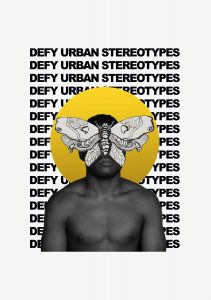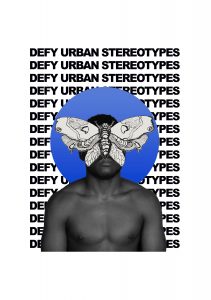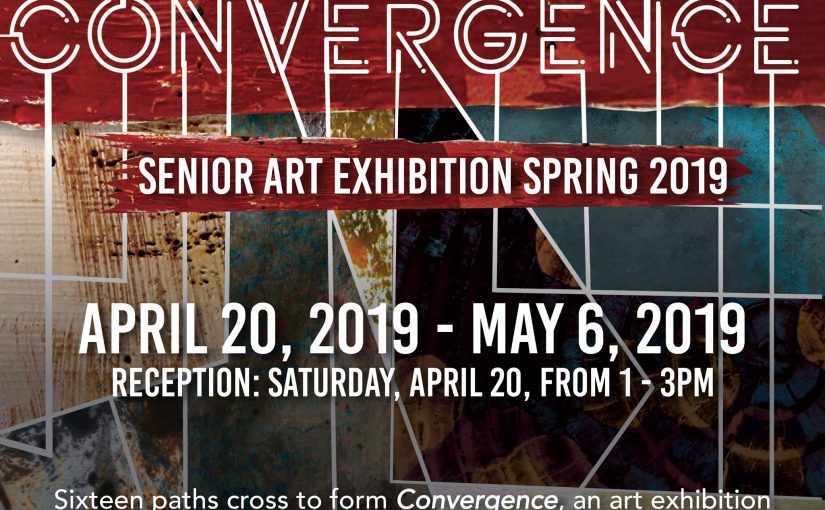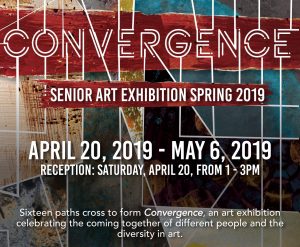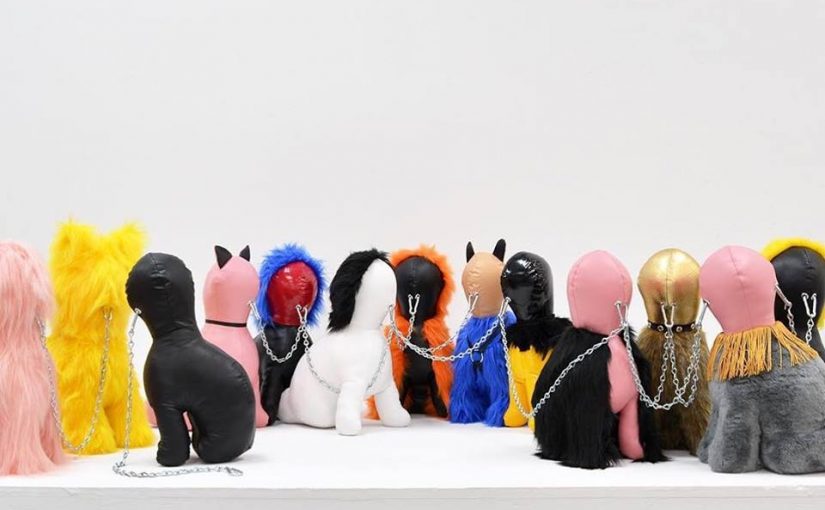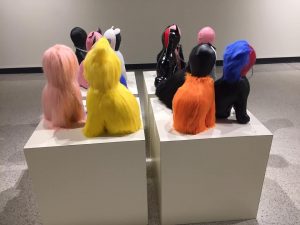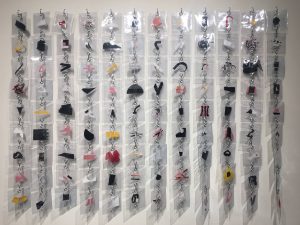By Sara Williams
The Dedo Maranville Fine Arts Gallery is once again decorated to the max with tangible expressions, emotions, thoughts, and statements. Sixteen artists, all seniors who are about to graduate from Valdosta State University, are showing off their best artwork at “Convergence Senior Art Exhibition Spring 2019”; and, I get to discuss the brilliant, thought-provoking artwork of Mitch Ogletree. “How old are you, Mitch?”, I blatantly ask. Mitch sweetly smiles in my direction and says, “I’m thirty-three years old”. Mitch Ogletree, born and raised in Tifton, Georgia, is about to graduate from Valdosta State University as part of the class of 2019 with his Bachelor of Fine Arts degree. With a practical expression and experienced tone, he states, “It’s something I started a while ago, when I was younger.” Acknowledging the fact that he is a non-traditional student is no big deal. Life experiences and cultural observations have helped shape who he is as an artist, and a gentleman.
In our discussion of his use of skulls, hearts, and faces, I mention the idea of those things being thought of clichés in the minds of many critics. He tells me that he prefers to utilize those symbols in a unique way to connect to people on a very basic level. Indeed, the basic ideas of “death, love, and desire” drew me into the abstract symbols to contemplate the meaning behind the artworks. When I stood before Ogletree’s Self Portrait, I had that unique experience that fine art should have on a body. The faces in the oil painting directed me to look and feel and see as if they were taking over my own innate reaction to the painting. Brilliant, cool colors shift to warm colors and dark values provide dramatic contrast which further convinces me that this is a deeply emotional piece for Ogletree.
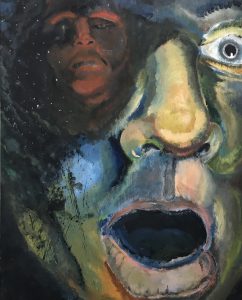
Self Portrait By Mitch Ogletree
Ogletree confesses that his life experiences and influence from the Surrealist movement have certainly been driving forces in his development as an artist. In his artist statement he uses the term, “non sequitur”, which alludes to some of the emotive juxtapositions of his work. The uncanny parallel of emotional growth and art are evident in Ogletree’s work that show the personal journey from personal lows to highs. Ogletree’s artwork indicates that he has a unique voice which may otherwise never be heard if one does not simply listen. The artwork of Mitch Ogletree is certainly an outlet for his creative overflow, but that is not the only way he chooses to release the beast. A musically inclined individual, Ogletree strums his guitar with coherent tunes to further drive home his artistic happenings. Quite a fitting addendum to this artist’s resume, Ogletree mingles one art style into another. According to Ogletree, “Music is intensely emotional, and every chord has a color and conveys a specific feeling. I enjoy the spontaneity of playing music and a feeling of progression. I would like to incorporate this into my art, by making moving images, artwork paired with music, or sequential storytelling.”
What is next for Mitch Ogletree? As with most people, the goal after graduation is to utilize that coveted degree. While a steady income is important to Ogletree, he plans to obtain employment that will fit around his artistic endeavors. Currently in the process of designing a children’s book, Ogletree’s dream of becoming a professional illustrator is becoming a reality. In addition, Ogletree is currently marketing himself and his artistry through professional websites and marketplaces which certainly add to his pursuit for success. I expect to see and hear a lot more from this artist as he is certainly a valuable asset to the collection of Valdosta State University Alumni.
Sara Williams is a Bachelor of Fine Arts student at Valdosta State University majoring in Art Education. While focusing on art education, Williams discovered valuable research in the field of art therapy. Graduate school and a career in art education or art therapy is on the horizon.



